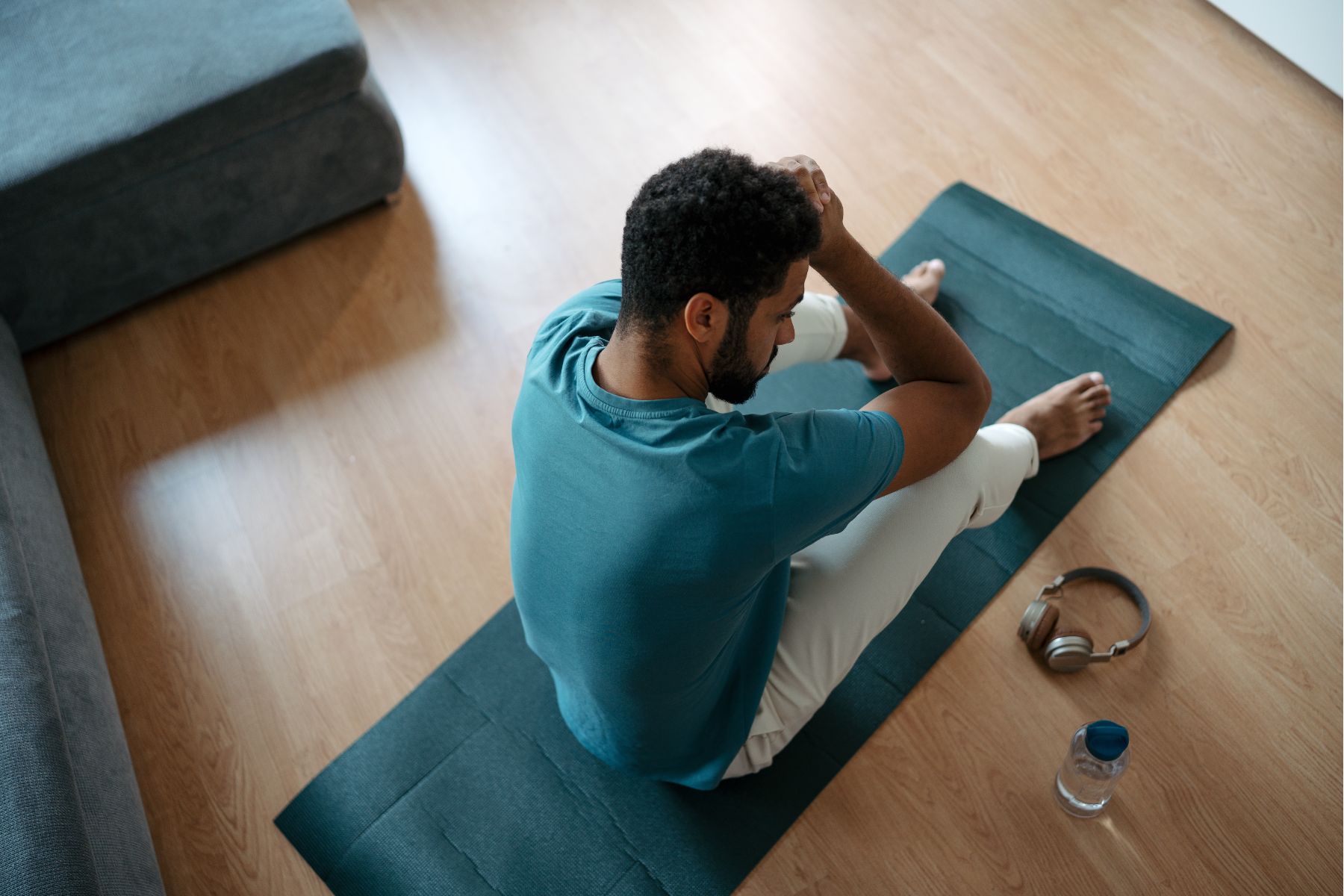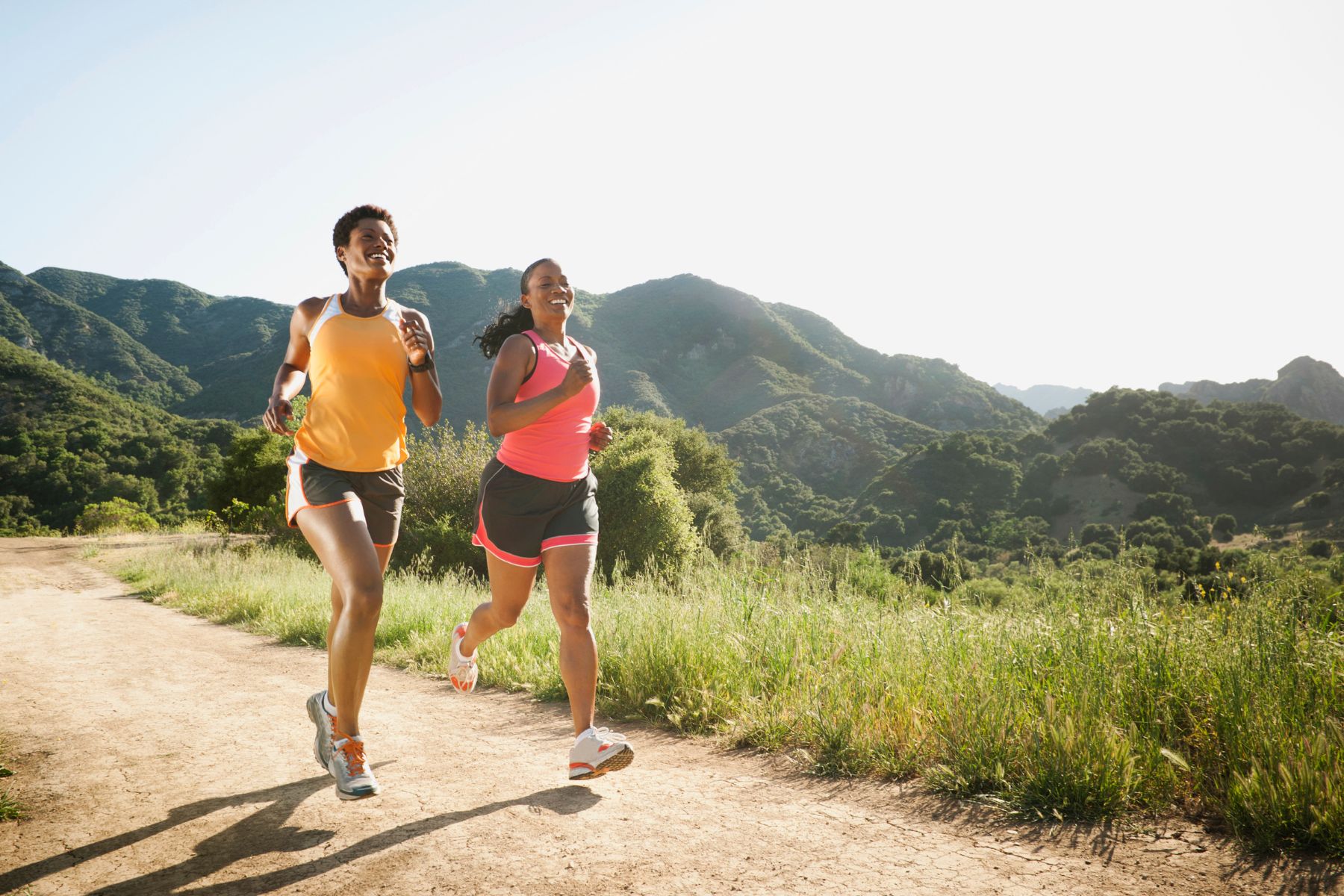
Halfpoint Images / Moment via Getty Images
How Exercise Can Help Reduce Loneliness
That sense of isolation you sometimes feel? Ironically, you’re not alone. But the good news is that you can forge stronger bonds when you work out with others.
By Alyssa Shaffer•
Why Are So Many Americans Struggling With Loneliness?
6 Ways Exercise Can Reduce Loneliness
How to Use Exercise to Combat Loneliness in Your Life
The Takeaway
It’s a cold, gray day and the house is quiet. I shut down my laptop, pace around the living room, tidy up the kitchen, and spend a few minutes snuggling with my dog when I recognize that—canine company aside—I’m lonely. So I do what always makes me feel better when I get a little blue: I join a Peloton cycling class that’s about to go live. In just a few minutes I’m giving and getting high fives, climbing up the Leaderboard, and feeling totally engaged and energized.
I’m not alone in feeling alone at times: According to a 2024 poll from the American Psychiatric Association, 30 percent of adults say they have experienced feelings of loneliness at least once a week over the past year, while 10 percent say they are lonely every day. And it’s not just your mood that’s impacted—prolonged feelings of being lonely or isolated can lead to significant health concerns. One 2023 study found that social isolation and loneliness may increase the risk of early death by 39 percent. Loneliness also increases the risk of heart disease, stroke, and dementia, as well as other serious medical conditions.
But there is a solution—one that’s as good for your body as your mind. It turns out that exercise, especially with others, is a great way to forge social connections and fight loneliness.
“There is a social component to exercising with others that enhances your overall wellbeing and makes you feel more connected,” says Arran Davis, PhD, a postdoctoral researcher at the Centre for the Study of Social Cohesion at the University of Oxford in the UK who studies the health benefits of sociality and movement.
You might have already discovered that sensation for yourself, especially if you’re a fan of some of the many interactive features found on the Peloton App. But that’s not the only way to stay connected. From virtual meetups to IRL sweat sessions, exercise can help to bridge the loneliness gap and keep you engaged and motivated.
Here’s why so many of us are feeling alone—and how making your workouts a social experience can help.
Why Are So Many Americans Struggling With Loneliness?
We’re a few years past the pandemic, so it may seem surprising that we’re experiencing this collective sense of isolation in such high numbers. But as multiple studies suggest, this decline in social connection has been taking place for decades, and there are several reasons why.
Smaller Household Size
More of us are living alone than in the past: In 1940, just 7.7 percent of households were single person, according to a 2020 report from the United States Census Bureau. By 2020, that number was 27.6 percent, and by 2022, it had increased further to 29 percent. And that may be great when it comes to blasting music or drinking straight from the milk carton, but at times it can make you feel more isolated, especially if you’re new to an area, notes Frank J. Infurna, PhD, a professor of psychology at Arizona State University, who researches loneliness.
“We have high levels of residential mobility today along with a culture of individualization,” he observes. “But if you’re living far from your family, or you’re moving every few years, and focusing on work as opposed to building community connections, it can contribute to a sense of loneliness.”
Smaller Friend Groups
Yes, you may have tons of friends and followers on social media, but when it comes to immediate friend groups, those numbers appear to be on the downswing. Forty-nine percent of Americans report having three or fewer close friends—a big jump from the 27 percent who reported the same in 1990. “We have fewer people to go to in times of need, or just to vent with,” says Infurna.
Digital Overload
While scrolling to unwind after a long day can be comforting, research shows that there are times when it can make you feel more alone. One 2023 study of 1,649 adults published in Health Psychology and Behavioral Medicine found spending more time on social media was associated with more feelings of loneliness, and those who use social media with the prime intent of maintaining relationships felt lonelier than those who are on social media for other reasons (such as shopping for new workout gear or keeping up with their favorite Peloton instructors).
“Social media isn’t always bad, it just depends on how you use it,” says Infurna. For example, if you’re doomscrolling or comparing yourself to others all the time, “that can exacerbate feelings of loneliness,” he continues. “But if you are using it as a tool of engagement and community building, it can have a dampening effect on loneliness.”
6 Ways Exercise Can Reduce Loneliness
While loneliness is a real problem, the good news is that exercising—especially with others—can be an effective way to combat it. One research review from 2024 found that both taking part in group exercise and having some social support during a sweat session (like climbing up the Leaderboard or getting a shout-out in a class) not only helped reduce loneliness, but also made for a better workout.
There are several reasons why exercising with others, either in-person or virtually, can help you feel less alone.

Blend Images - Erik Isakson via Getty Images
It Strengthens Social Connections
Humans are social animals. “We evolved to live in tightly knit groups, and when we are isolated, our bodies go on higher alert,” explains Davis. “It’s our way of preparing ourselves for an increased likelihood of physical harm and resource scarcity.” That “preparation” includes being more sensitive to pain and fatigue and experiencing darker moods. “We’re conserving our resources,” he adds.
But exercising with others, says Davis, helps to reinforce our connection with others—making us less sensitive to pain and even improving performance. A 2021 study from Davis, published in the journal PLOS One, found that people who took part in an organized running program in the UK not only enjoyed themselves more, they also ran faster and had more energy than when they ran alone.
There’s a Shared Sense of Purpose and Resolve
Whether you’re training for a charity century ride, trying to set a new fitness personal record, or you simply want to move a little more in your daily life, having a workout buddy (or buddies) can give you added motivation. And there doesn’t have to be a finish line or event to train for. “You can often bond over a shared goal or experience,” says Infurna. “It helps to know you are part of a group and aren’t in it alone.”
It Improves Your Mood
We’ve all heard of the runner’s high, and you don’t even have to be a runner to experience it. Cycling, swimming, rowing, and any other high-intensity aerobic activity are all associated with higher levels of endorphins and endocannabinoids. “Exercising releases endorphins, so we associate it with feeling good,” says Davis.
But endorphins can be found in other places too: Even simply laughing together—over, say, Peloton instructor Cody Rigsby’s shenanigans—releases these feel-good chemicals. “Being social and exercising together all contributes to this feeling of being in a good mood,” Davis adds.
You’re Building Trust
Nothing gets you out of bed on a cold day like knowing your buddy will be waiting for you for your morning run. And having an accountability partner spot you in a gym or a teammate who’ll have your back in a game means you’re able to build trust—and be trusted back in return. Research even shows that people who are physically active together exhibited more trust and more prosocial behaviors than those who did not take part in any activity.
It’s a Buffer in Tough Times
There’s no shortage of research that shows exercise can help protect against depression and anxiety, including one recent meta-analysis representing more than 191,000 people which found that even those who only got half of the recommended levels of physical activity had an 18 percent lower risk of depression than those who got no exercise. (Those who got the full recommended levels had a 25 percent lower risk.)
Exercising in a group seems especially effective at protecting against depression: A Social Science & Medicine study from 2021 found that people who took part in group exercise or sports had fewer symptoms of depression four years later, and noted that exercisers who took part in physical activity more frequently reported feeling less lonely.
It’s important to note that exercise alone likely can’t cure depression, but it can be a powerful tool in your treatment against it. If you’re feeling persistent sadness, anxiety, or hopelessness, or your symptoms are worsening, talk to your doctor about which treatment options—exercise, therapy, medication, or a combination of all of the above—might be right for you.
How to Use Exercise to Combat Loneliness in Your Life
Now that you’re up on the why, it’s time to delve into the how. There are plenty of ways to turn your exercise routine into a buffer against loneliness.
Grab a Friend
“Asking someone to join you when you go for a walk or run really makes things more collaborative,” says Davis. No need to be at the same fitness level, he adds: “You don’t have to do the most difficult thing together right away. It’s OK to just take a 30-minute walk with a friend and catch up.”
If you’ve been meaning to catch up more with your parent, best friend, or partner, ask them if they’d like to join you for your next workout (in person or on the phone). This could also be a great way to solidify a new friendship with some of your fellow gymgoers—why not ask the pal you always chat with in Pilates or yoga if they'd like to take a walk?
Try Something New
If you’ve ever wanted to try something completely new—maybe rock climbing or ballet—but have worried about looking or feeling silly, you’re not alone. But consider this: Activities that teach you new skills or introduce you to new people can be a great way to bond over a shared activity. And as Infurna notes above, that can boost motivation and bring people together.
Sign up for a Fitness App
With thousands of classes available 24/7 on the Peloton App, there’s something for everybody—whether you’re looking for a kid-friendly yoga class to take as a family, a Spanish-language class, or even a virtual Outdoor Run Club, Peloton has it. It’s one of the best places to find your virtual fitness community while getting amazing vibes from the very best in the business.
“With a Peloton workout, it’s easy to find your people,” says Peloton instructor Marcel Dinkins.
Don’t just take our word for it: Research published in 2024 confirms fitness apps are a great way to improve your wellbeing, and those that provide a platform to share exercise experiences and showcase achievements helps promote better communication and strengthens social bonds.
Make the Most of Your Fitness Community
Maybe you already have a group of exercise-loving besties whose idea of a good time is a run in the park followed by coffee (or cocktails). Or perhaps you’ve got a whole bunch of buddies spread out across the globe but like the idea of being able to stay in touch by training together.
Enter Peloton’s teams feature, which allows you to build teams of up to 50,000 people through the Peloton App, plus search for new teams to join. Use it to create a team, invite friends, and either work toward a common goal or compete against each other. There’s even a shared Leaderboard, which lets you keep track of team member stats like days worked out, total time worked out, number of workouts, and distance.
And if some of those virtual pals become IRL friends, all the better. “I have Members that met on the Leaderboard, then found each other on social media and have become best friends from taking my classes together,” Marcel says. “There is something about watching a name show up in class on the Leaderboard every week—it's like the new school equivalent of wanting to meet your pen pal in real life.”
Foster Some Friendly Competition
We all have our inner pro-athletes screaming to get out, so why not embrace a little friendly competition? Research has found that when competition is part of your workout (like comparing who racks up more steps in a day), you’re likely to move more and get better results. So go ahead: See which of your pals you can pass on the Leaderboard on your next workout, or hit the pickleball court for an epic match. Just remember that at the end of the day, it’s about having fun.
The Takeaway
Loneliness impacts our health in real and serious ways. But one of the most powerful tools you can use to forge stronger bonds is through exercise. “Exercise immediately provides you with a shared experience,” says Marcel. “When we are in a workout environment, we know the person next to us or the leader is going through the same thing as we are, and it bonds you in a unique way—you feel like you're in this together.”
Whether it’s taking a walk with a friend or joining a virtual workout with a thousand other participants, having moments of shared movement can greatly help to build social connections and improve both your fitness and health.

Peloton App
Access thousands of classes with no equipment needed.
This content is for informational and educational purposes only and does not constitute individualized advice. It is not intended to replace professional medical evaluation, diagnosis, or treatment. Seek the advice of your physician for questions you may have regarding your health or a medical condition. If you are having a medical emergency, call your physician or 911 immediately.
Strengthen your mind-body connection
Enter your email to get articles, expert-backed tips, and updates from Peloton sent to your inbox.
By providing your email address, you agree to receive marketing communications from Peloton.
For more about how we use your information, see our Privacy Policy.










